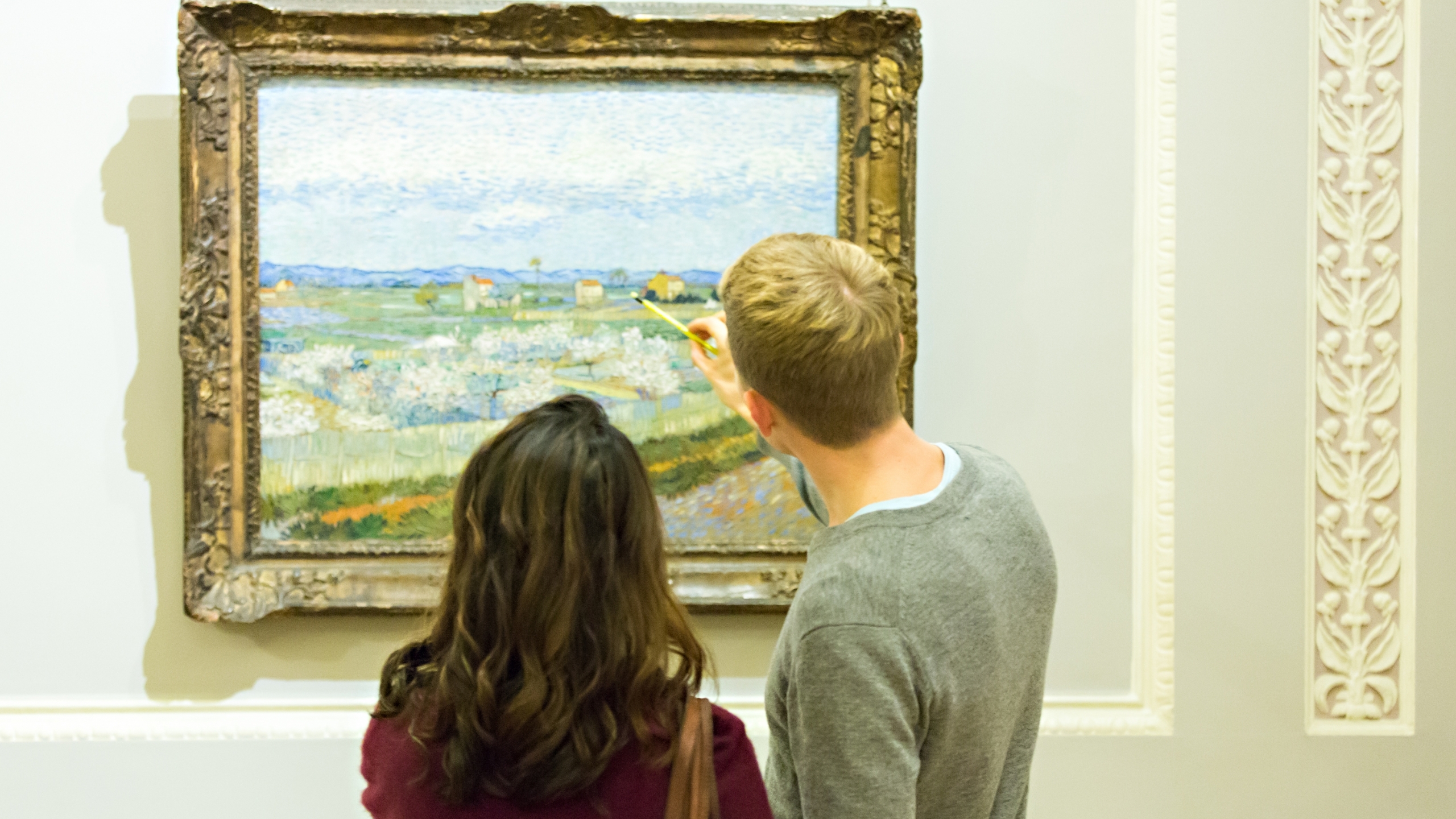
What is art history?
Art history – the study of art from across the world, and from the ancient to the present day – covers virtually every aspect of human history and experience. This is because it looks at works of art not just as objects, but as a way of understanding the world, and the societies in which they were created.
What were the conscious and unconscious choices that led to an artwork’s form and subject matter? What does its content – how people are represented, how religion is shown – tell you about the society in which it was created, and its history? How was it received when it was first put on display, and how has this changed?
By asking these questions, art historians gain a fascinating insight into how people throughout time and across the world lived, thought, felt and understood everything around them. Developing understanding of these challenges helps us make sense of the relationship between people, art and the forces that shape the world we live in today – and provides us with the critical skills to understand the visual world around us.
Why study Art History?
It combines the rigour of a history degree with the visual skills required to interpret works of art. It will help you develop critical skills, to think about art and history from a variety of perspectives, and to present your ideas succinctly and persuasively. These are all key skills that will help you to stand out in today’s job market. You will learn to analyse the role art plays in shaping society. Art History will introduce you to world-famous works of art, as well as others that are less well known but equally as fascinating to examine and study. You will get to explore new areas of Art History, and artworks from a variety of time periods, from all around the world, delivered in a range of different forms. If you enjoy reading history, studying literature or languages, looking at art, and are fascinated by the relationship between people, art, and the forces that have shaped the world we live in, then Art History is the subject for you.
"What is art history" - we asked our academics:
Dr Guido Rebecchini, Reader in Sixteenth-Century Southern European Art:
Artworks from the past communicate with us across centuries in a language that is much more mysterious and nuanced than one might first assume. Interrogating them and looking closely at what they represent, as well as at their materials and techniques, enables us to make contact with ideas, rituals, beliefs and practices wholly different from our own. Art historians therefore explore the gulf between the appearance of artworks – as we might see them today in museums, galleries and historical buildings – and the complex ideas behind their production.
It is important to remember that artworks produced in the Middle Ages and the Early Modern Period, in both the East and the West, were not intended to be displayed in museums. Instead, such artworks communicated with their audiences in spaces where rituals and practices that helped to form familial, civic and religious identities, such as palaces, churches and squares. Works of art were often made to mark marriages, births, deaths, and they reflected hopes and ambitions; in fact, they were often thought to have real agency in the world. Artworks were considered to possess holy powers, brought in procession, or stood in for absent people.
Ultimately, as art historians, we look closely and carefully, patiently and inquisitively, and ask questions incessantly. To do so, we analyse, compare and connect a wide range of difference sources and pieces of evidence; primarily the artworks themselves, but also documents, literature and many other traces of the past. By doing so, we locate works of art in the ecosystem in which they were conceived, which helps us to better understand how artworks of the past have shaped the world we live in. For these reasons, art history is a truly interdisciplinary: it demands that we take the vantage point of others, like the anthropologist does; that we see things in historical perspective, as the historian does; and that we consider how ideas related religion, family, gender, race, and politics are implicated in the art of the past. In conclusion, art history is an inquiry into human culture pursued mainly – but not only – by critically looking at the extraordinary images that past generations have left behind.
